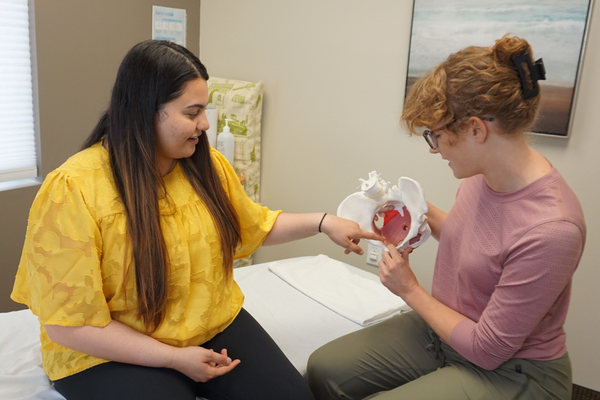
Prolapse (Cystocele, Rectocele)
Women who suffer from prolapse can notice a variety of symptoms ranging from minimal to more noted severity. Often women will feel a sense of vaginal heaviness as the day progresses or after they have been standing on their feet for too long. Other women will be suddenly alarmed when they actually feel or see a bulge extending from their vaginal opening.
Prolapse can be a result of the bladder pushing downwards or “falling” against the vaginal wall, the rectum pushing against the vaginal wall or the uterus descending downwards on the vaginal canal.
There are several options available for women with prolapse including conservative physiotherapy care and surgery. Recent studies demonstrate that physiotherapy can improve the “grade” of prolapse and prevent unnecessary surgeries. In addition, studies are showing that women who participate in pelvic floor strengthening prior to surgery have fewer post-surgical recurrences of prolapse.
Symptoms of POP May Include:
• Vaginal bulge
• Pelvic/perineal pressure or heaviness
• Low back pain
• Difficulty emptying the bladder
• Difficulty emptying the bowel
• Sexual dysfunction


Common Myths about POP
Surgery is the only way to “fix it”
• some women manage well with pelvic floor exercises/pessaries (grade 1-3 POP)
POP is the cause of pelvic pain
• pain is caused by overactive pelvic floor muscles in an attempt “to hold the prolapse in”
POP is structural and cannot be helped with pelvic PT
• POP is a pressure management problem
• pressures within the thorax and abdomen can push down on the pelvic organs
• assessing posture, spinal mobility, movement patterns, hip mobility/strength and breathing habits can help decrease downward pressure
Pessaries are for older women
• 96% of women with POP who are appropriately fitted are satisfied and feel it reduces their symptoms
Certain exercises should be avoided if you have a POP
• a pelvic health physiotherapist can teach women how to control pelvic pressure while exercising and enable them to continue an exercise program


